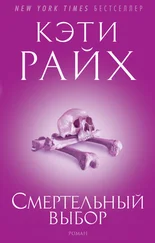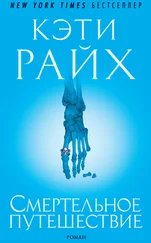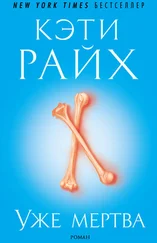“Time to work, ladies. Sister Julienne, you record everything we find. Write it on the bag, and enter it in the log, just as we discussed. We’re at”– I looked into the pit –“about the two-foot level. Sister Marguerite, you’re going to shoot some pictures?”
Sister Marguerite nodded, held up her camera.
They flew into action, eager after the long hours of watching. I troweled, Sisters Eyelid and Girl Scout screened. More and more fragments appeared, and before long we could see an outline in the stained soil. Wood. Badly deteriorated. Not good.
Using my trowel and bare hands, I continued to uncover what I hoped was a coffin. Though the temperature was below freezing and all feeling had left my fingers and toes, inside my parka I sweated. Please let this be her, I thought. Now who was praying?
As I inched the pit northward, exposing more and more wood, the object expanded in breadth. Slowly, the contour emerged: hexagonal. Coffin shape. It took some effort not to shout “Hallelujah!” Churchy, but unprofessional, I told myself.
I teased away earth, handful by handful, until the top of the object was fully exposed. It was a small casket, and I was moving from the foot toward the head. I put down my trowel and reached for a paintbrush. My eyes met those of one of my screeners. I smiled. She smiled. Her right lid did a jitterbug.
I brushed the wooden surface again and again, teasing away decades of encrusted soil. Everyone stopped to watch. Gradually, a raised object emerged on the coffin lid. Just above the widest point. Exactly where a plaque would be. My heart did its own fast dance.
I brushed dirt from the object until it came into focus. It was oval, metallic, with a filigreed edge. Using a toothbrush, I gently cleaned its surface. Letters emerged.
“Sister, could you hand me my flashlight? From the pack?”
Again, they leaned in as one. Penguins at a watering spot. I shone the beam onto the plaque. “Élisabeth Nicolet – 1846–1888. Femme contemplative. ”
“We’ve got her,” I said to no one in particular.
“Hallelujah!” shouted Sister Girl Scout. So much for church etiquette.
For the next two hours we exhumed Élisabeth’s remains. The nuns, and even Father Ménard, threw themselves into the task like undergraduates on their first dig. Habits and cassock swirled around me as dirt was screened, bags were filled, labeled, and stacked, and the whole process was captured on film. Guy helped, though still reluctant. It was as odd a crew as I’ve ever directed.
Removing the casket was not easy. Though it was small, the wood was badly damaged and the coffin interior had filled with dirt, increasing the weight to about ten tons. The side trench had been a good call, though I’d underestimated the space we’d need. We had to expand outward by two feet to allow plywood to slide under the coffin. Eventually, we were able to raise the whole assemblage using woven polypropylene rope.
• • •
By five-thirty we were drinking coffee in the convent kitchen, exhausted, fingers, toes, and faces thawing. Élisabeth Nicolet and her casket were locked in the back of the archdiocese van, along with my equipment. Tomorrow, Guy would drive her to the Laboratoire de Médecine Légale in Montreal, where I work as Forensic Anthropologist for the Province of Quebec. Since the historic dead do not qualify as forensic cases, special permission had been obtained from the Bureau du Coroner to perform the analysis there. I would have two weeks with the bones.
I set down my cup and said my good-byes. Again. The sisters thanked me, again, smiling through tense faces, nervous already about my findings. They were great smilers.
Father Ménard walked me to my car. It had grown dark and a light snow was falling. The flakes felt strangely hot against my cheeks.
The priest asked once more if I wouldn’t prefer to overnight at the convent. The snow sparkled behind him as it drifted in the porch light. Again, I declined. A few last road directions, and I was on my way.
Twenty minutes on the two-lane and I began to regret my decision. The flakes that had floated lazily in my headlights were now slicing across in a steady diagonal curtain. The road and the trees to either side were covered by a membrane of white that was growing more opaque by the second.
I clutched the wheel with both hands, palms clammy inside my gloves. I slowed to forty. Thirty-five. Every few minutes I tested the brakes. While I have been living in Quebec off and on for years, I have never grown accustomed to winter driving. I think of myself as tough, but put me on wheels in snow and I am Princess Chickenheart. I still have the typical Southern reaction to winter storms. Oh. Snow. Then we won’t be going out, of course. Les québécois look at me and laugh.
Fear has a redeeming quality. It drives away fatigue. Tired as I was, I stayed alert, teeth clenched, neck craned, muscles rigid. The Eastern Townships Autoroute was a bit better than the back roads, but not much. Lac Memphrémagog to Montreal is normally a two-hour drive. It took me almost four.
Shortly after ten, I stood in the dark of my apartment, exhausted, glad to be home. Quebec home. I’d been away in North Carolina almost two months. Bienvenue . My thought process had already shifted to French.
I turned up the heat and checked the refrigerator. Bleak. I micro-zapped a frozen burrito and washed it down with room temperature root beer. Not haute cuisine, but filling.
The luggage I’d dropped off Tuesday night sat unopened in the bedroom. I didn’t consider unpacking. Tomorrow. I fell into bed, planning to sleep at least nine hours. The phone woke me in less than four.
“ Oui , yes,” I mumbled, the linguistic transition now in limbo.
“Temperance. It is Pierre LaManche. I am very sorry to disturb you at this hour.”
I waited. In the seven years I’d worked for him, the lab director had never called me at three in the morning.
“I hope things went well at Lac Memphrémagog.” He cleared his throat. “I have just had a call from the coroner’s office. There is a house fire in St-Jovite. The firefighters are still trying to get it under control. The arson investigators will go in first thing in the morning, and the coroner wants us there.” Again the throat. “A neighbor says the residents are at home. Their cars are in the driveway.”
“Why do you need me?” I asked in English.
“Apparently the fire is extremely intense. If there are bodies, they will be badly burned. Perhaps reduced to calcined bone and teeth. It could be a difficult recovery.”
Damn. Not tomorrow.
“What time?”
“I will come for you at six A.M.?”
“O.K.”
“Temperance. It could be a bad one. There were children living there.”
I set the alarm for five-thirty.
Bienvenue.
I HAVE LIVED IN THE SOUTH ALL OF MY ADULT LIFE. IT CAN NEVER be too hot for me. I love the beach in August, sundresses, ceiling fans, the smell of children’s sweaty hair, the sound of bugs at window screens. Yet I spend my summers and school breaks in Quebec. Most months during the academic year, I fly from Charlotte, North Carolina, where I am on the anthropology faculty at the university, to work at the medicolegal lab in Montreal. This is a distance of approximately twelve hundred miles. Due north.
When it is deep winter, I often have a talk with myself before deplaning. It will be cold, I remind myself. It will be very cold. But you will dress for it and be ready. Yes. I will be ready. I never am. It’s always a shock to leave the terminal and take that first, startling breath.
At 6 A.M., on the tenth day of March, the thermometer on my patio read two degrees Fahrenheit. Seventeen below, Celsius. I was wearing everything I possibly could. Long underwear, jeans, double sweaters, hiking boots, and woolen socks. Inside the socks, I had sparkly insulated liners designed to keep astronaut feet toasty on Pluto. Same provocative combo as the day before. I’d probably stay just as warm.
Читать дальше











